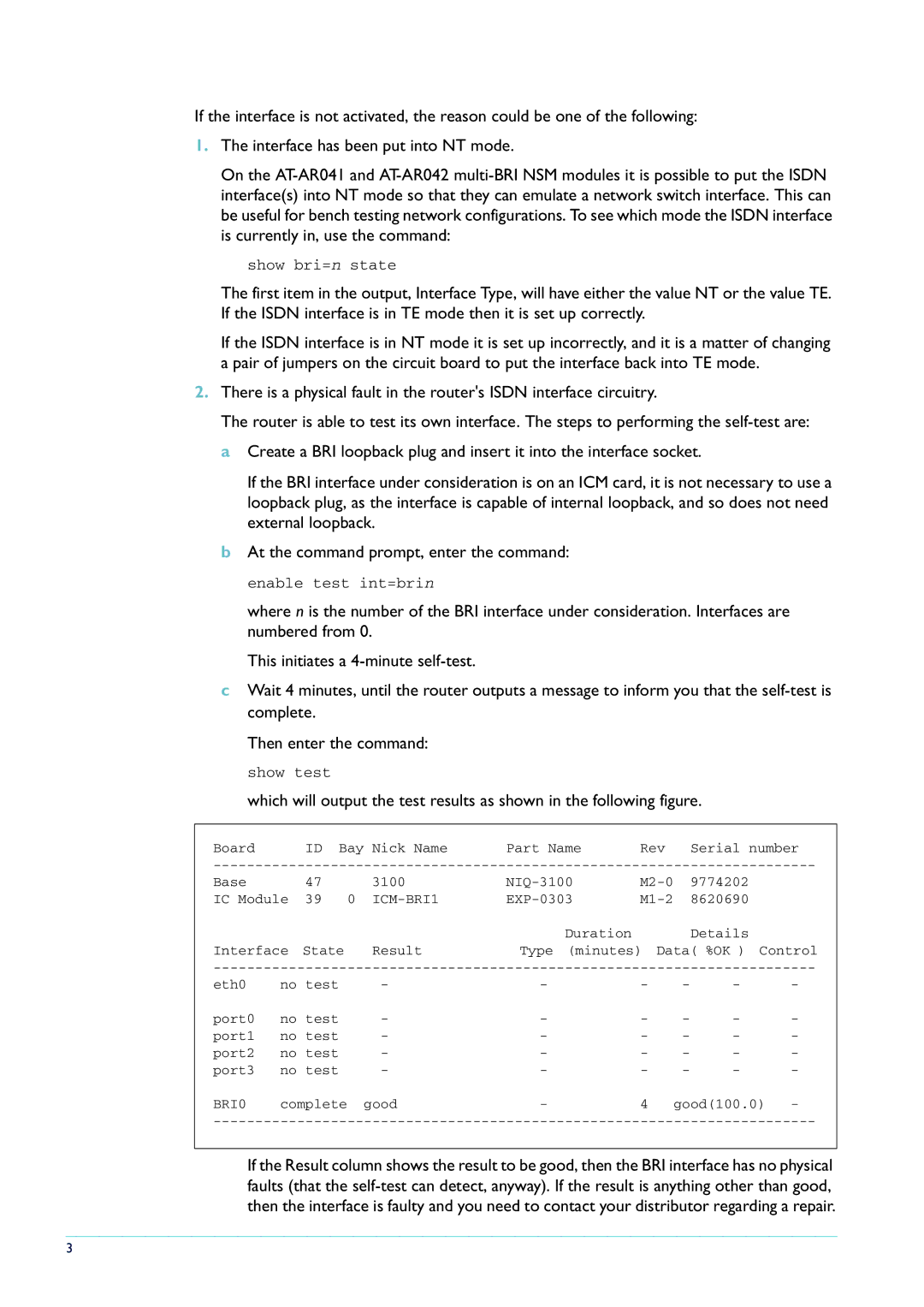
If the interface is not activated, the reason could be one of the following:
1.The interface has been put into NT mode.
On the
show bri=n state
The first item in the output, Interface Type, will have either the value NT or the value TE. If the ISDN interface is in TE mode then it is set up correctly.
If the ISDN interface is in NT mode it is set up incorrectly, and it is a matter of changing a pair of jumpers on the circuit board to put the interface back into TE mode.
2.There is a physical fault in the router's ISDN interface circuitry.
The router is able to test its own interface. The steps to performing the
If the BRI interface under consideration is on an ICM card, it is not necessary to use a loopback plug, as the interface is capable of internal loopback, and so does not need external loopback.
bAt the command prompt, enter the command: enable test int=brin
where n is the number of the BRI interface under consideration. Interfaces are numbered from 0.
This initiates a
cWait 4 minutes, until the router outputs a message to inform you that the
Then enter the command: show test
which will output the test results as shown in the following figure.
Board ID Bay Nick Name Part Name Rev Serial number
Base | 47 | 3100 | 9774202 | ||
IC Module | 39 | 0 | 8620690 | ||
|
|
| Duration |
| Details |
Interface | State | Result | Type (minutes) Data( %OK ) Control | ||
eth0 | no test | - | - | - | - | - | - |
port0 | no test | - | - | - | - | - | - |
port1 | no test | - | - | - | - | - | - |
port2 | no test | - | - | - | - | - | - |
port3 | no test | - | - | - | - | - | - |
BRI0 | complete | good | - | 4 | good(100.0) | - | |
If the Result column shows the result to be good, then the BRI interface has no physical faults (that the
3
